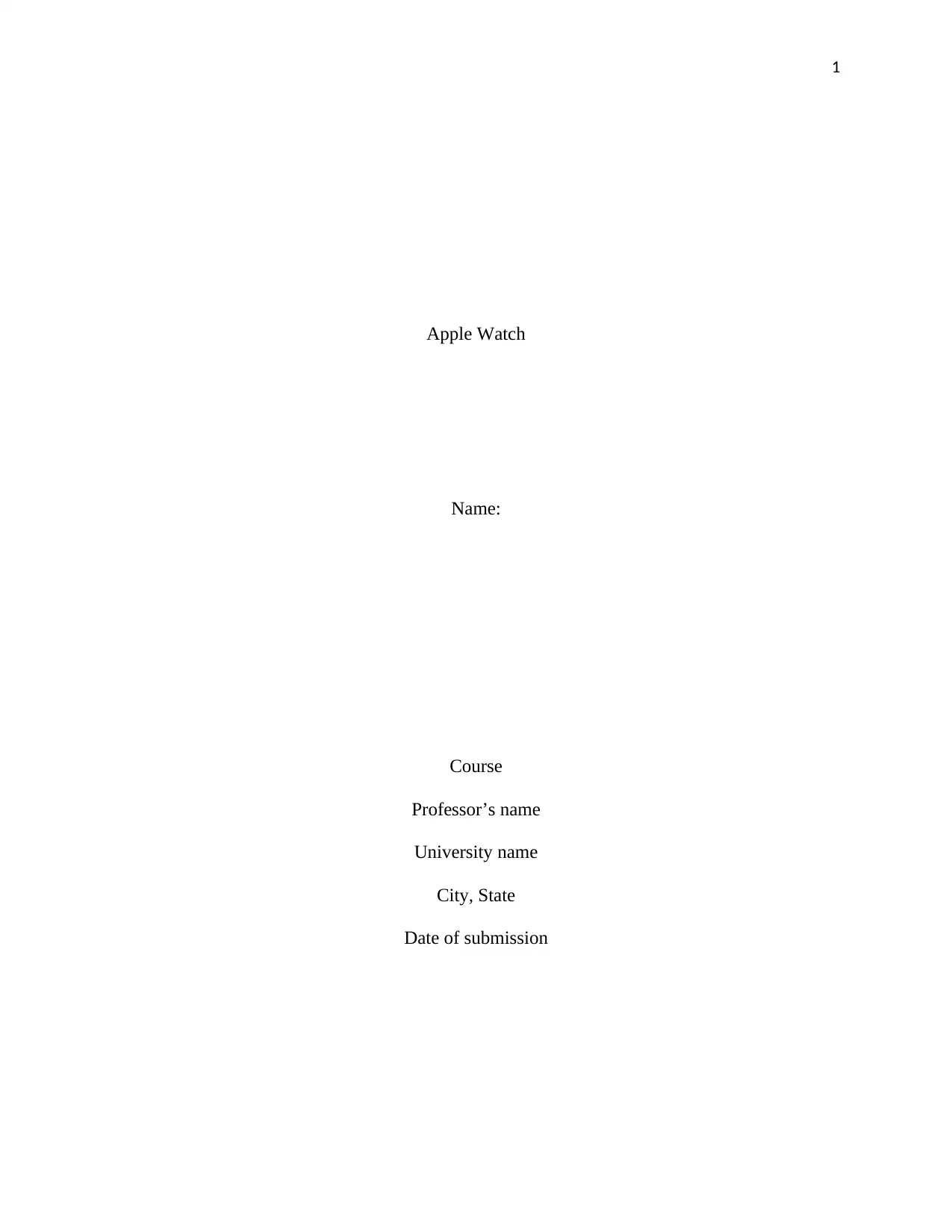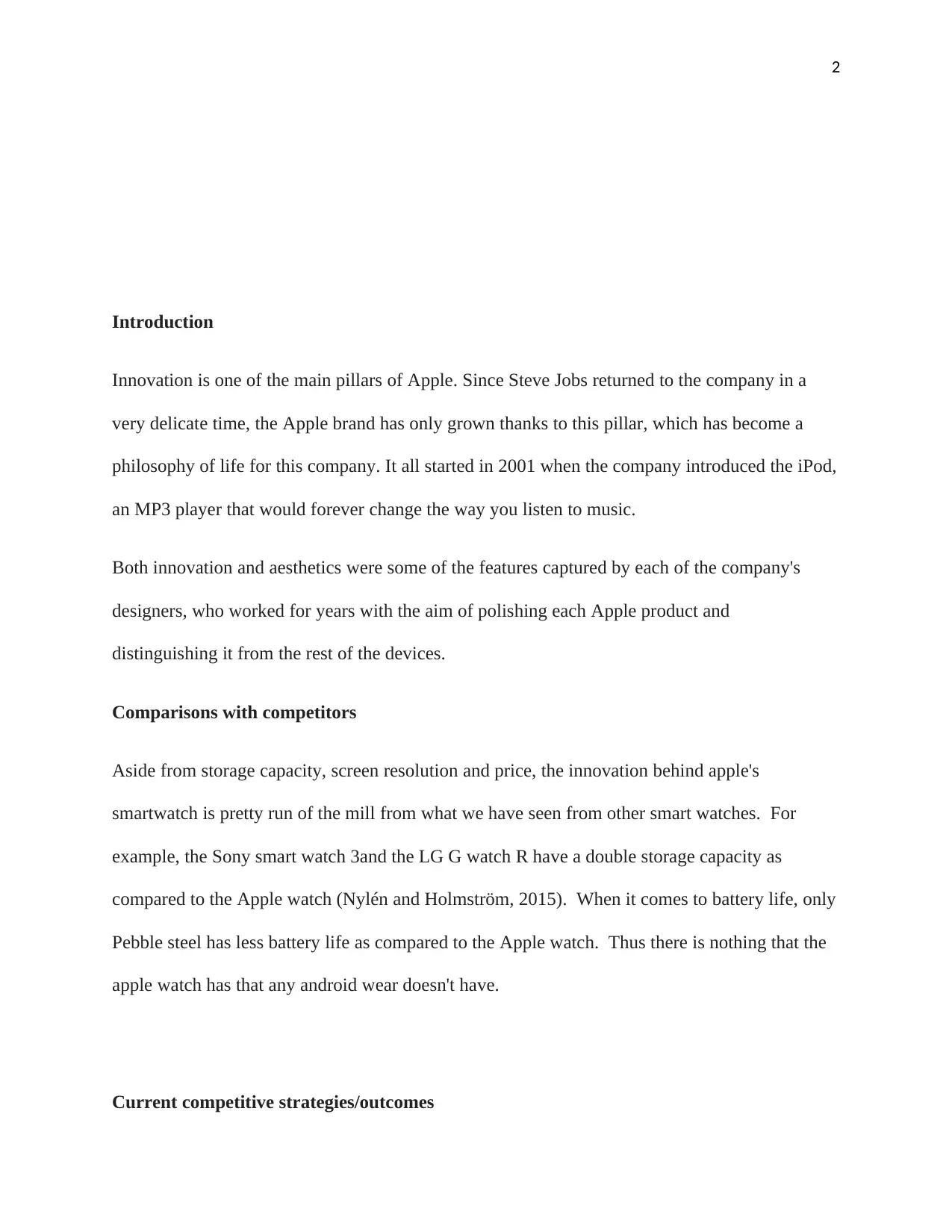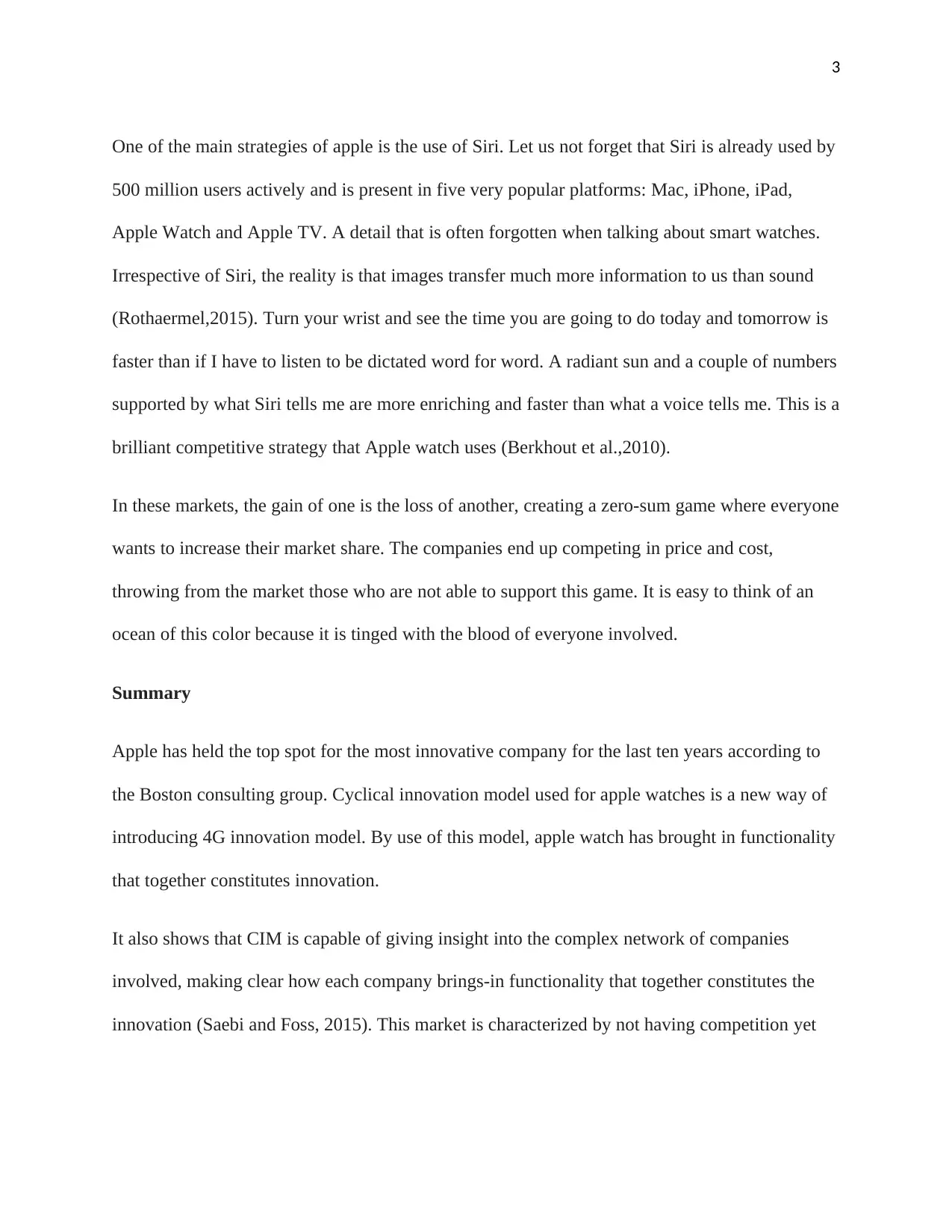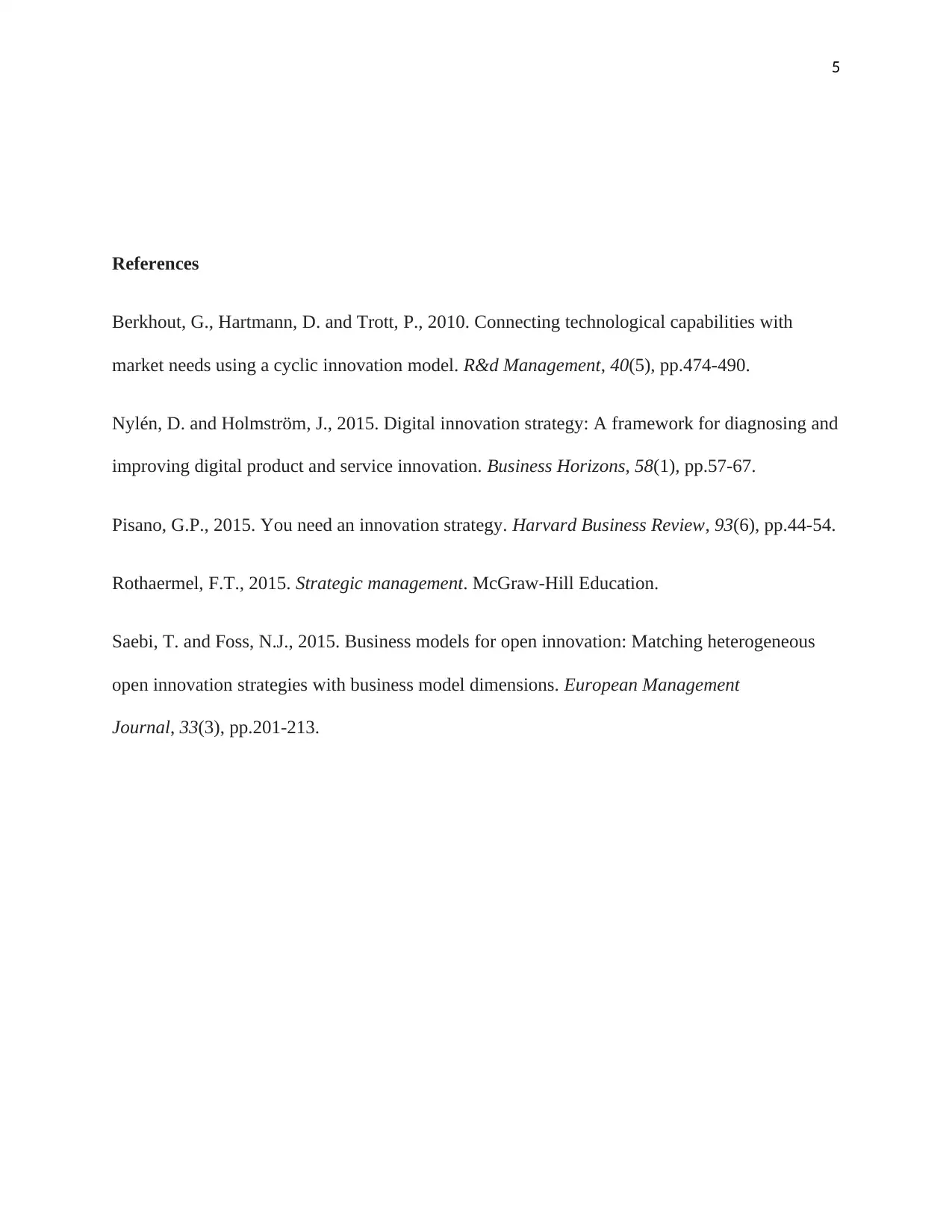Apple Watch: Strategies, Innovation, and Market Analysis Report
VerifiedAdded on 2023/06/07
|5
|756
|367
Report
AI Summary
This report provides an analysis of the Apple Watch, focusing on Apple's innovation strategies and competitive landscape. It begins with an introduction highlighting Apple's innovation-driven approach and the evolution of its products, particularly the impact of the iPod. The report then compares the Apple Watch with competitors, examining factors such as storage, screen resolution, and battery life. The analysis emphasizes Apple's use of Siri as a key competitive strategy, highlighting its integration across multiple platforms and its effectiveness in conveying information. The report discusses the cyclical innovation model (CIM) used for the Apple Watch, emphasizing its ability to integrate functionalities and drive innovation. Finally, the report touches upon the market dynamics and the willingness of customers to pay a premium for the product due to its perceived high value.
1 out of 5








![[object Object]](/_next/static/media/star-bottom.7253800d.svg)